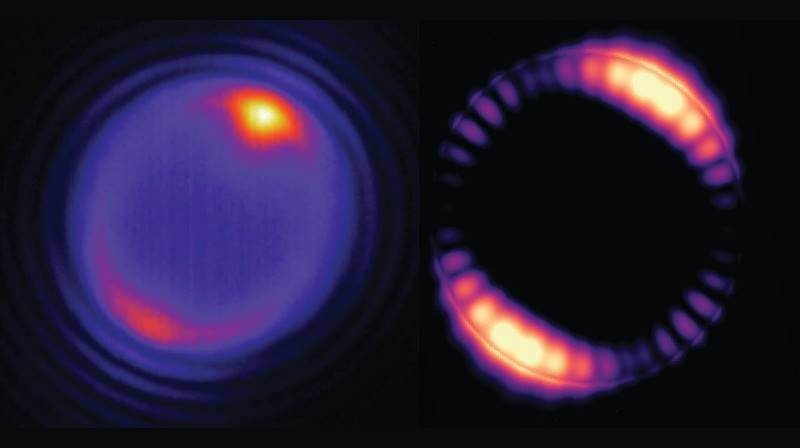The Science
The Impact
The tiny lasers are stable enough to operate continuously for days. This breakthrough will enable technologies for imaging or controlling biological activity with infrared light. In addition, these tiny lasers open doors to make light-based computer chips.
Summary
An international team of researchers led by scientists at the Molecular Foundry has found a way to convert nanoparticle-coated microscopic plastic beads into lasers smaller than red blood cells.These microlasers, which convert infrared light into light at higher frequencies, are among the smallest, continuously emitting lasers of their kind ever reported and constantly and stably emit light for hours at a time, even when submerged in biological fluids such as blood serum.The innovation opens up the possibilities for imaging or controlling biological activity with infrared light and for the fabrication of light-based computer chips.
In this study, the researchers found that when an infrared laser excites thulium-doped nanoparticles coated on the surface of the beads, the light emitted by the nanoparticles bounces around the inner surface of the bead just like whispers bouncing along the walls of a whispering gallery.
Light can make thousands of trips around the circumference of the microsphere in a fraction of a second, causing some frequencies of light to interact (or “interfere”) with themselves to produce brighter light while other frequencies cancel themselves out. When the intensity of light traveling around these beads reaches a certain threshold, the light can stimulate the emission of more light with the exact same color, and that light, in turn, can stimulate even more light. This positive feedback loop—the basis for all lasers—produces intense light at a very narrow range of wavelengths in the beads.
When the team exposed the beads to an infrared laser with enough power, the beads turned into upconverting lasers, with higher frequencies than the original laser. The beads also produce laser light at the lowest powers ever recorded for upconverting nanoparticle-based lasers. Other upconverting nanoparticle lasers operate only intermittently; they are only exposed to short, powerful pulses of light because longer exposure would damage them. In this case, researchers found that their microlasers performed stably after five hours of continuous use, both in air and in biological media.
Funding
This work was performed at the Molecular Foundry and was supported by the Department of Energy, Office of Science, Office of Basic Energy Sciences. This research was in part funded under “NU-Berkeley strategic initiative in warm-dense matter, advanced materials and energy sources for 2014-2018” from the Ministry of Education and Science of the Republic of Kazakhstan. Portions of this research were supported by the Global Research Laboratory Program through the National Research Foundation of Korea funded by the Ministry of Science and ICT.
Original post https://alertarticles.info


